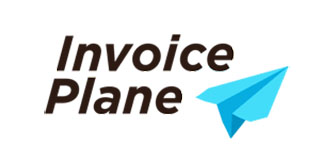
In this tutorial, we will show you how to install and configuration of InvoicePlane on your CentOS 7. For those of you who didn’t know, InvoicePlane is open-source software that was built to offer a free application for client management, invoicing, and payment tracking. It is used by many companies and freelancers worldwide to manage their complete billing circle.
This article assumes you have at least basic knowledge of Linux, know how to use the shell, and most importantly, you host your site on your own VPS. The installation is quite simple. I will show you the step-by-step installation InvoicePlane in CentOS 7.
Prerequisites
- A server running one of the following operating systems: CentOS 7.
- It’s recommended that you use a fresh OS install to prevent any potential issues.
- SSH access to the server (or just open Terminal if you’re on a desktop).
- A
non-root sudo useror access to theroot user. We recommend acting as anon-root sudo user, however, as you can harm your system if you’re not careful when acting as the root.
Install InvoicePlane on CentOS 7
Step 1. First, let’s start by ensuring your system is up-to-date.
yum -y update
Step 2. Install the LAMP server.
A CentOS 7 LAMP server is required. If you do not have LAMP installed, you can follow our guide here.
Step 3. Installing InvoicePlane.
The first thing to do is to go to InvoicePlane’s download page and download the latest stable version of InvoicePlane, At the moment of writing this article it is version 1.4.3:
cd /var/www/html/ mkdir invoiceplane wget https://invoiceplane.com/download/v1.4.3 unzip v1.4.3*
We will need to change some folders permissions:
chown -R apache: invoiceplane/
Step 4. Configuring MariaDB.
By default, MariaDB is not hardened. You can secure MariaDB using the mysql_secure_installation script. You should read and below each step carefully which will set a root password, remove anonymous users, disallow remote root login, and remove the test database and access to secure MariaDB.
mysql_secure_installation
Configure it like this:
- Set root password? [Y/n] y - Remove anonymous users? [Y/n] y - Disallow root login remotely? [Y/n] y - Remove test database and access to it? [Y/n] y - Reload privilege tables now? [Y/n] y
Next, we will need to log in to the MariaDB console and create a database for the InvoicePlane. Run the following command:
mysql -u root -p
This will prompt you for a password, so enter your MariaDB root password and hit Enter. Once you are logged in to your database server you need to create a database for InvoicePlane installation:
CCREATE DATABASE invoiceplane; GRANT ALL PRIVILEGES ON invoiceplane.* TO 'invoiceplane'@'localhost' IDENTIFIED BY 'YoUrPaSsWoRd'; FLUSH PRIVILEGES; \q
Step 5. Configuring Apache web server for InvoicePlane.
We will create an Apache virtual host for your InvoicePlane website. Edit your ‘/etc/httpd/conf/httpd.conf’ file using a text editor of your choice:
nano /etc/httpd/conf/httpd.conf
Add the following lines:
<VirtualHost *:80> ServerAdmin admin@yourdomain.com DocumentRoot /var/www/html/invoiceplane ServerName yourdomain.com ServerAlias www.yourdomain.com <Directory /var/www/html/invoiceplane/> Options Indexes FollowSymLinks MultiViews AllowOverride All Order allow,deny allow from all </Directory> ErrorLog /var/log/httpd/yourdomain.com-error_log CustomLog /var/log/httpd/yourdomain.com-access_log common </VirtualHost>
Save and close the file. Restart the apache service for the changes to take effect:
systemctl restart httpd.service
Step 6. Accessing InvoicePlane.
InvoicePlane will be available on HTTP port 80 by default. Open your favorite browser and navigate to http://yourdomain.com/setup or http://your-server-ip/setup and complete the required steps to finish the installation. If you are using a firewall, please open port 80 to enable access to the control panel.
Congratulations! You have successfully installed InvoicePlane. Thanks for using this tutorial for installing InvoicePlane on your CentOS 7 system. For additional help or useful information, we recommend you check the official InvoicePlane website.